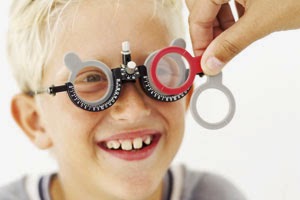Ever since the personal computer hit the desk top in the 1980's, concern about the possible vision implications to the computer operator has not stopped.
Screen technology has improved dramatically over the last 30 years to the point that virtually every person carries a smart phone or tablet in the their pocket or their bag. It is common today for the average person, young and old, to be viewing some sort of digital computer screen for more than 10 hours per day.
 |
| Light Spectrum |
Is this something we need to be worried about?
Recently studies have shown that blue light (or high energy visible light) potentially is toxic to the human eye. Dr Jim Kokkinakis was recently quoted in the Daily Telegraph on the implications of computer screen use and possible damage to our most precious sense - our Vision. This is especially more important in children's eyes, which are more delicate and still developing. CLICK HERE to read the article in full.
Blue light has been shown to penetrate the structures of the eyes more intensely, which possibly could be implicated with retina damage in the future.
 |
| Phone and Tablet could harming your child eye |
So why the concern all of a sudden?
In the last 5- 7 years all the new screens whether they be on your smart phone, on your computer screen or on your TV are made with LED (Light Emitting Diode) technology. This type of light globe irradiates significantly more blue light than previous screen technology. The problem is that many children, as young as 2 years of age now are often playing with tablets for hours. The proximity and the intensity of the blue light projected onto the delicate eyes of children is also therefore significant.
There has been much discussion within the profession about the possible implications and as usual when there is a new thought, there are always many opinions. They range from, do not worry about it, to it is a disaster brewing. The problem with these theories is that we will be experts in hindsight.
We will all remember that smoking was once considered healthy and more recently global warming and its implications. Smoking took many decades to discover its horrendous health implications and globally warming is still being debated furiously amongst scientists with no definite answers. Do we have to wait for disaster to react?
At The Eye Practice we have chosen to take the conservative approach. We educate all our patients about the new research and let them make up their own mind. Most choose to wear blue blocking filters in their new glasses, as there is no downside and potentially a big upside if blue light proves to be the hazard some people think it is.
Historically screen use has been associated with eye strain and dry eyes. These are definitely big problems to a persons well-being. If blue light proves to be hazardous we are now taking about something far more serious.







